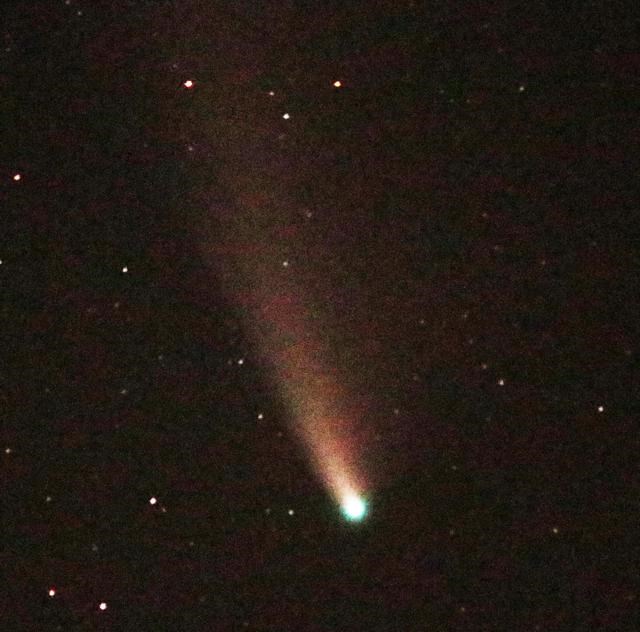(Photos of comet Neowise by Greg Nikkel, taken from north of North Weyburn on Tuesday night.)
July 22-23 is a special time to see Comet NEOWISE, as it will be closest to Earth on these days, passing at some 64 million miles (103 million km) from our planet. On the nights around its closest approach – although you’ll probably still need binoculars to spot this celestial visitor – the comet will be visible at the same time we see a beautiful waxing crescent moon in the western twilight sky.
The comet has been gradually appearing higher each night. You’ll find it near the Big Dipper constellation.
You can see this comet with your unaided eyes, but it will become truly spectacular through binoculars and telescopes. What you should expect to see is a small, bright, fuzzy spot, possibly with an orange or green hue.
Binoculars will reveal the comet's faint tail extending generally upwards, away from the sun. Look for two tails pointed in slightly different directions — a brighter one composed of debris the comet is dropping behind it and a fainter, blue-tinted one composed of ionized gas.
The latter tail will always point directly away from the sun, since it is being pushed by the solar wind. While your telescope will magnify the comet's head nicely, its tail will extend beyond your telescope's limited field of view.
Now the comet is swinging upwards (north of that plane) while it flies away from the sun. That trajectory will bring the comet closest to the Earth (or perigee) on July 22 at approximately 9 p.m. EDT, when it will be 64 million miles (103.5 million kilometers), or 0.692 astronomical units (1 AU is the average distance between Earth and the sun) away from us.
Unfortunately, as the comet nears Earth and looms larger, it will also be experiencing less heating from the sun, causing it to fade in visual brightness due to less gas production. It’s a trade-off that makes looking at the comet at the first opportunity your safest bet.




